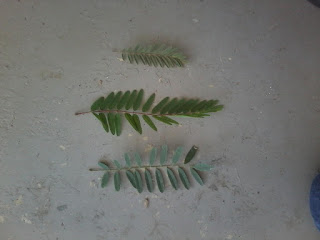For several years now have been experimenting with new species and improvement of native species to help reclaim denuded or degraded lands. Though I have never traveled outside the country I have made many contacts outside my homeland and by swapping ideas and living things have helped influence eco systems abroad.
I have found two types of societies, rural types that love the country and nature and with those I see pretty much eye to eye.
But the urban city dwellers that are ignorant of nature, fear animals and couldn't care less about what happens in the wild...these types are the ones I hope I can make their life a living hell. If your idea of a nice place to go on vacation is New York or Chicago...well you and I are not going to get along.
I have been working with others like myself in the 4 corners of the US, Europe, South Africa and China. No need to really do anything in Australia. Would like to make some contacts in the deforested areas of the Amazon though.
Some of the things you have read in the news have been previous projects. Nile Monitors, Pythons in Florida, Snakeheads in various spots of the Eastern US, etc. All these were NOT accidental pet escapes per the news although an occasional one may have been. It is funny we notice that it takes about 10 years for things to be found once released. There are so many they haven't found yet.
Well as the blogs continue many will be discussed in detail and projects progress updated. Also how natives can be improved will be explained. This has been a really good surprise as how this has worked has been shocking. BeforeiI close these pix are of Black Locust, but not just any, they are crosses of about 7 different geographic variants. Not hybrids as they are still Robinia Pseudoacacia but from areas all over their range. The effect of "Heterosis" makes them especially aggressive and fast growing. Forming thick, thorny thickets that are impenetrable to people and livestock. Also being nitrogen fixing they csn grow in the poorest of soil....repairing this derelict construction site.
 Now dot #2. We have black plague in the midwest. Can be confirmed per the web.
Now dot #2. We have black plague in the midwest. Can be confirmed per the web. So gather all your brightest and best and figure out what happens when a cat in Wyoming gets on a plane to L.A. Super Rats + plague + filth and fleas and homeless street trash everywhere. Think the Cali health system can handle that? I guess we will find out.
So gather all your brightest and best and figure out what happens when a cat in Wyoming gets on a plane to L.A. Super Rats + plague + filth and fleas and homeless street trash everywhere. Think the Cali health system can handle that? I guess we will find out. Oh and another thing to think of. Typhus lives under the exact same environmental conditions so is a barometer of what to watch for.
Oh and another thing to think of. Typhus lives under the exact same environmental conditions so is a barometer of what to watch for. So before you come kicking my door down I have nothing to do with this. Just letting you know to not let that big government attitude get to your head. You don't even come close to having a handle on it. I am too old to be playing in the streets now but I am cheering on the Yellow Vests of the world.
So until then, C'ya!
So before you come kicking my door down I have nothing to do with this. Just letting you know to not let that big government attitude get to your head. You don't even come close to having a handle on it. I am too old to be playing in the streets now but I am cheering on the Yellow Vests of the world.
So until then, C'ya!





























